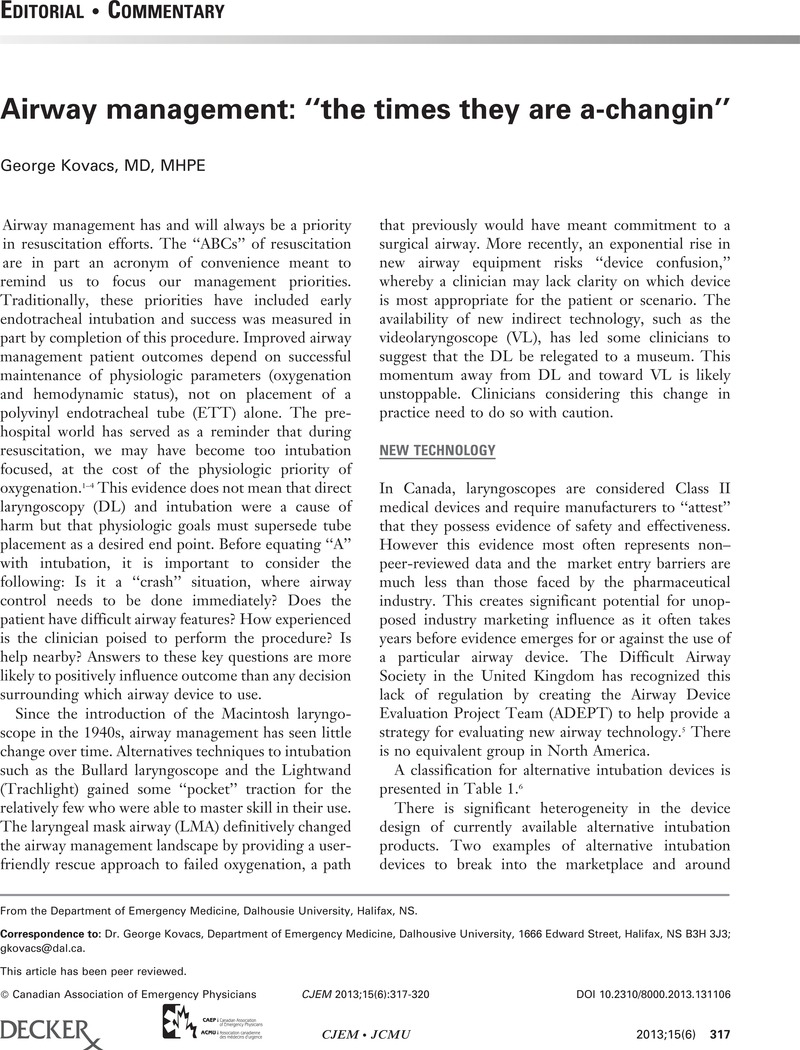Crossref Citations
This article has been cited by the following publications. This list is generated based on data provided by Crossref.
Murphy, Laurel D.
Kovacs, George J.
Reardon, Peter M.
and
Law, John Adam
2014.
Comparison of the King Vision Video Laryngoscope with the Macintosh Laryngoscope.
The Journal of Emergency Medicine,
Vol. 47,
Issue. 2,
p.
239.
Green, Robert S.
Fergusson, Dean A.
Turgeon, Alexis F.
McIntyre, Lauralyn A.
Kovacs, George J.
Griesdale, Donald E.
Zarychanski, Ryan
Butler, Michael B.
Kureshi, Nelofar
and
Erdogan, Mete
2017.
Device and Medication Preferences of Canadian Physicians for Emergent Endotracheal Intubation in Critically Ill Patients.
CJEM,
Vol. 19,
Issue. 3,
p.
186.
Maartens, Tyron
and
de Waal, Benjamin
2017.
A comparison of direct laryngoscopy to video laryngoscopy by paramedic students in manikin-simulated airway management scenarios.
African Journal of Emergency Medicine,
Vol. 7,
Issue. 4,
p.
183.
Long, Micah T.
Kory, Pierre D.
Steuerwald, Michael T.
Joffe, Aaron M.
and
Galgon, Richard E.
2020.
Videolaryngoscopy and Direct Laryngoscopy Equal for Air Medical Intubation? The Operator Matters.
Critical Care Medicine,
Vol. 48,
Issue. 3,
p.
e254.
Kovacs, George
Levitan, Richard
and
Reardon, Rob
2020.
Redirecting the Laryngoscopy Debate and Optimizing Emergency Airway Management.
Academic Emergency Medicine,
Vol. 27,
Issue. 12,
p.
1366.





